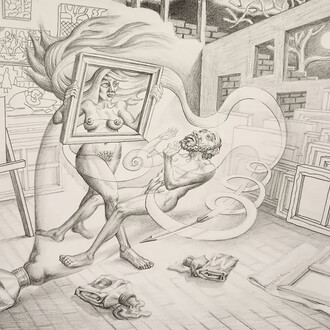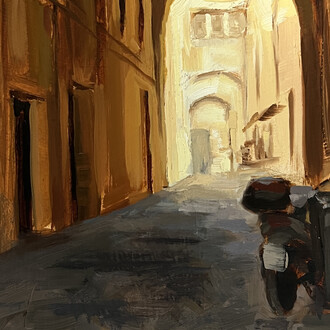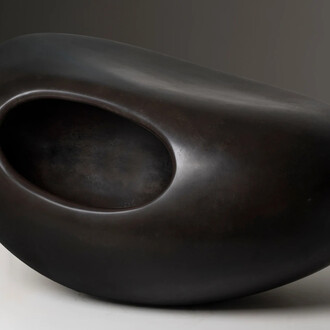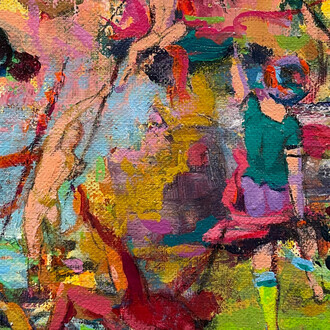Sebastian Thomas is an American painter whose work re-imagines medieval iconography through a contemporary lens, blending mythic storytelling with commentary on modern culture. Drawing from illuminated manuscripts, altar paintings, and devotional objects, Thomas creates densely composed, multi-paneled works that stage vibrant confrontations between saints, beasts, and heroes—allegories for what he calls “the return of the dark ages.” His intricate surfaces and luminous palettes fuse the sumptuousness of International Gothic painting with the wit and irreverence of popular culture.
Thomas formulates his own casein paints using traditional methods, treating craftsmanship as an act of devotion. Many of his works are assembled from interlocking panels hung on French cleats, a modular format that allows for reconfiguration and narrative play. Across these ornate tableaux, female protagonists—martyrs, sphinxes, and warriors—emerge as central figures, embodying intelligence, resilience, and spiritual agency. By reviving pre-modern visual languages, Thomas critiques the technological and social hierarchies of the present, envisioning a world where mythic imagination resists digital domination.
Thomas earned his MFA in Painting and Drawing from the School of the Art Institute of Chicago (2023) and dual BFAs in Painting and Creative Writing from the Kansas City Art Institute (2017). His work has been exhibited nationally and internationally, including at Zolla/Lieberman Gallery (Chicago), Nashira Gallery (Milan), the Bridgeport Art Center (Chicago), and Brick Lane Gallery (London). He is represented by Zolla/Lieberman Gallery in Chicago and Nashira Gallery in Milan.
In addition to his studio practice, Thomas teaches painting and drawing at the School of the Art Institute of Chicago and Indiana University Northwest, where he also leads public art initiatives such as the City of Gary Mural Project. He lives and works in Chicago, continuing to build a richly symbolic body of work that unites historical craft, contemporary allegory, and the enduring power of myth.
















